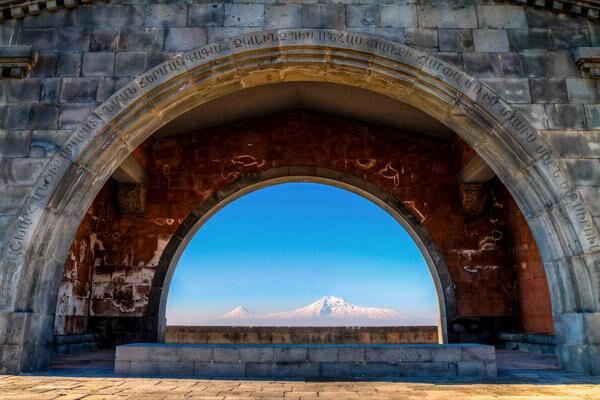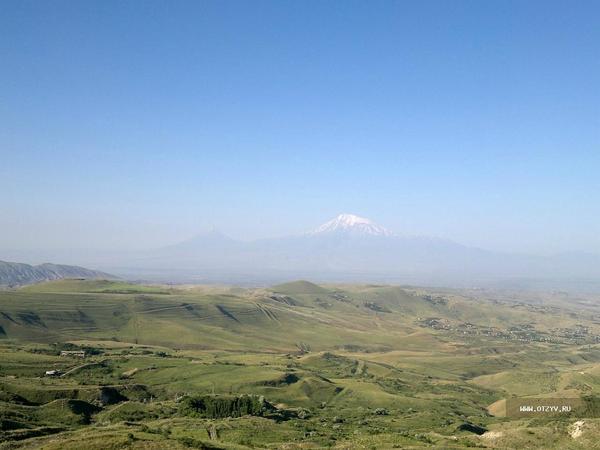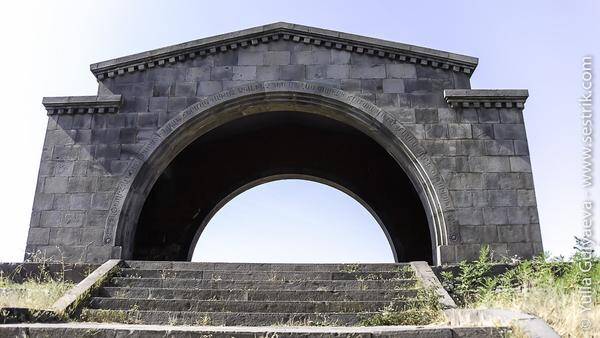This monument (architect: Raphael Israyelian) was erected in 1957. The site has a breathtaking view of Mount Ararat from here. The words carved on the arch belong to one of Armenia’s most famous poets, Yeghisheh Charents (1897-1937), and locals refer to the arch as Charents Arch.
A revolutionary artist during the turbulent years of the Armenian Genocide and the formation of the Soviet Union, Charents was born Yeghishe Soghomonian in Iran and received his schooling in Kars (1904-1912), then a part of the Armenian Provinces of the Russian Empire. In 1914, when WW I broke out, Charents joined Armenian Volunteer brigades on the Caucasus front and fought with Russian Imperial troops as they routed the Turks and liberated western Armenia as far as Van and Erzurum. During this campaign Charents witnessed first-hand the ravages of the Armenian Genocide, which strongly affected his poetry.
After the founding of the First Armenian Republic, Charents moved to Yerevan in 1919, working as a teacher. When the Soviet Republic was proclaimed in Armenia in 1920, Charents joined the movement, believing it was the best path to peace and prosperity for what was then a wounded, devastated country. He became enamored of the Futurists; particularly influenced by the views of Vladimir Mayakovski.
In 1930, as the political situation in Soviet Armenia changed, Charents’ views became completely at odds with the totalitarian regime of the ruling powers.
Charents became a victim of that same totalitarian regime when he was killed in 1937, one of the millions murdered during the Great Purge. His poems were banned although in his lifetime a 6-volume edition of poems and one novel were published. His home-museum in Yerevan houses his works and personal items.
Some of his most famous works are Lyrical Poems, Dantean Legend (1916), The Frenzied Mobs (1918), Poems (1923), Land of Nairi (1923) Epic Daybreak (1930), Book for the Road (1933). Charents also wrote many unpublished poems.
видео













